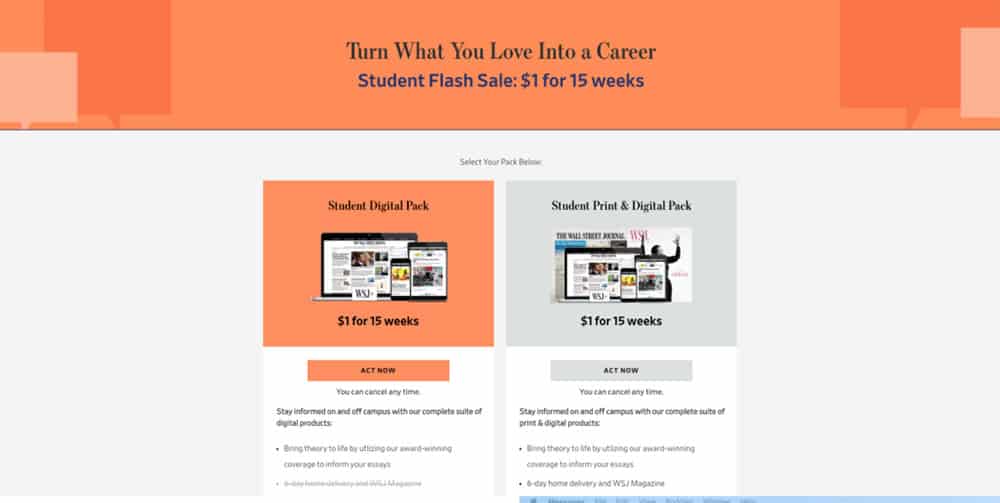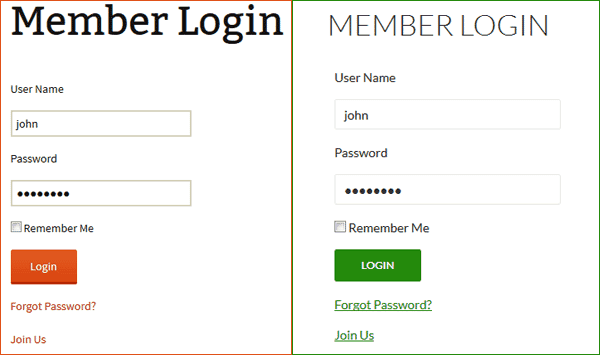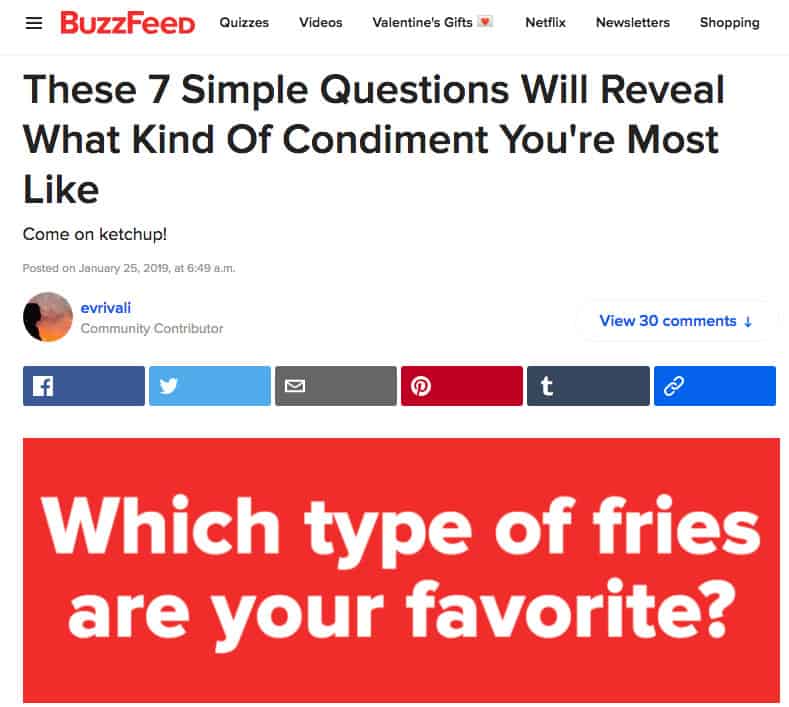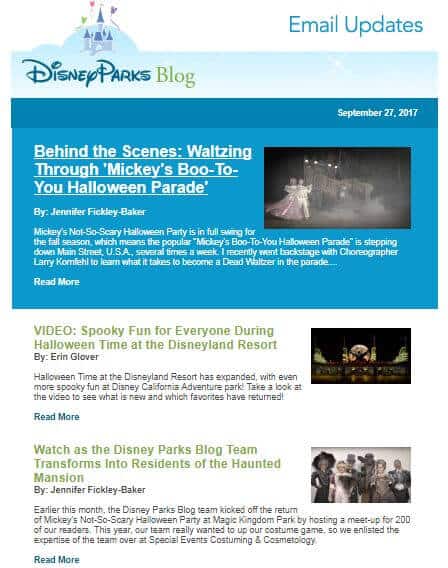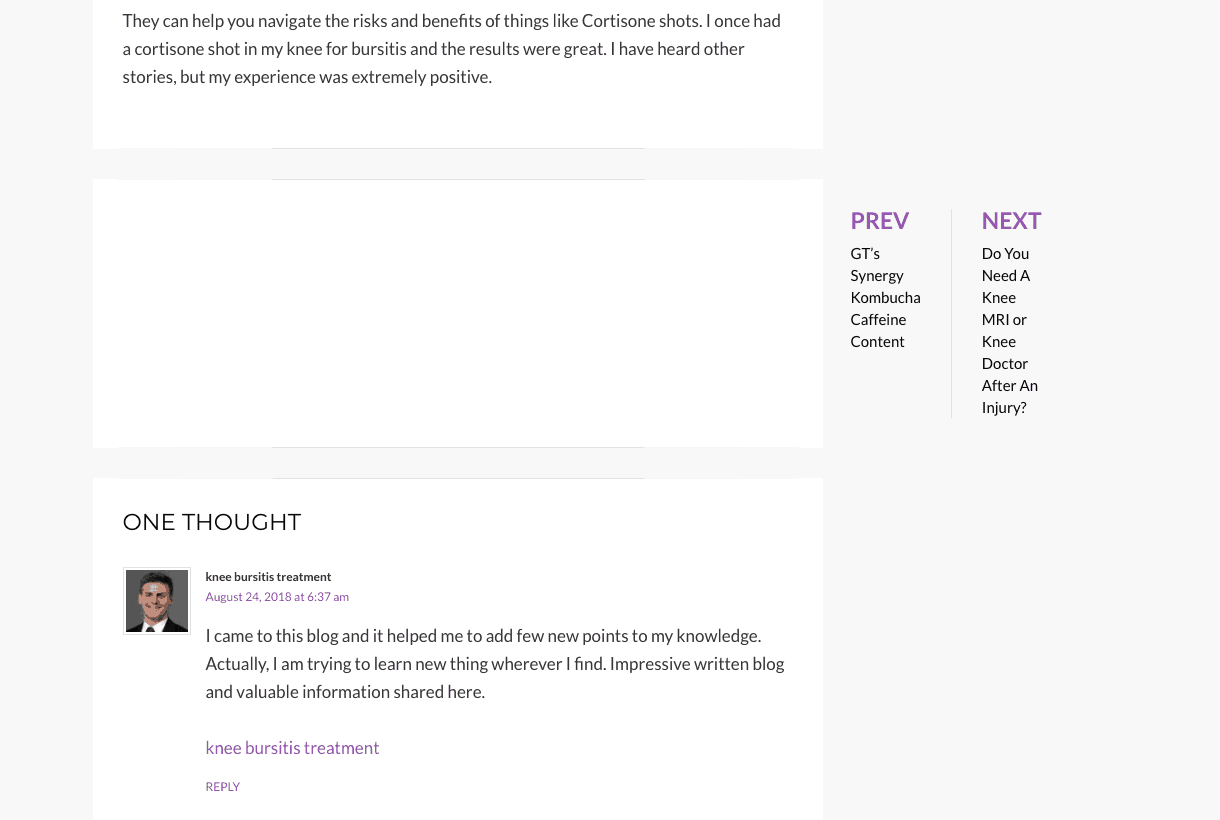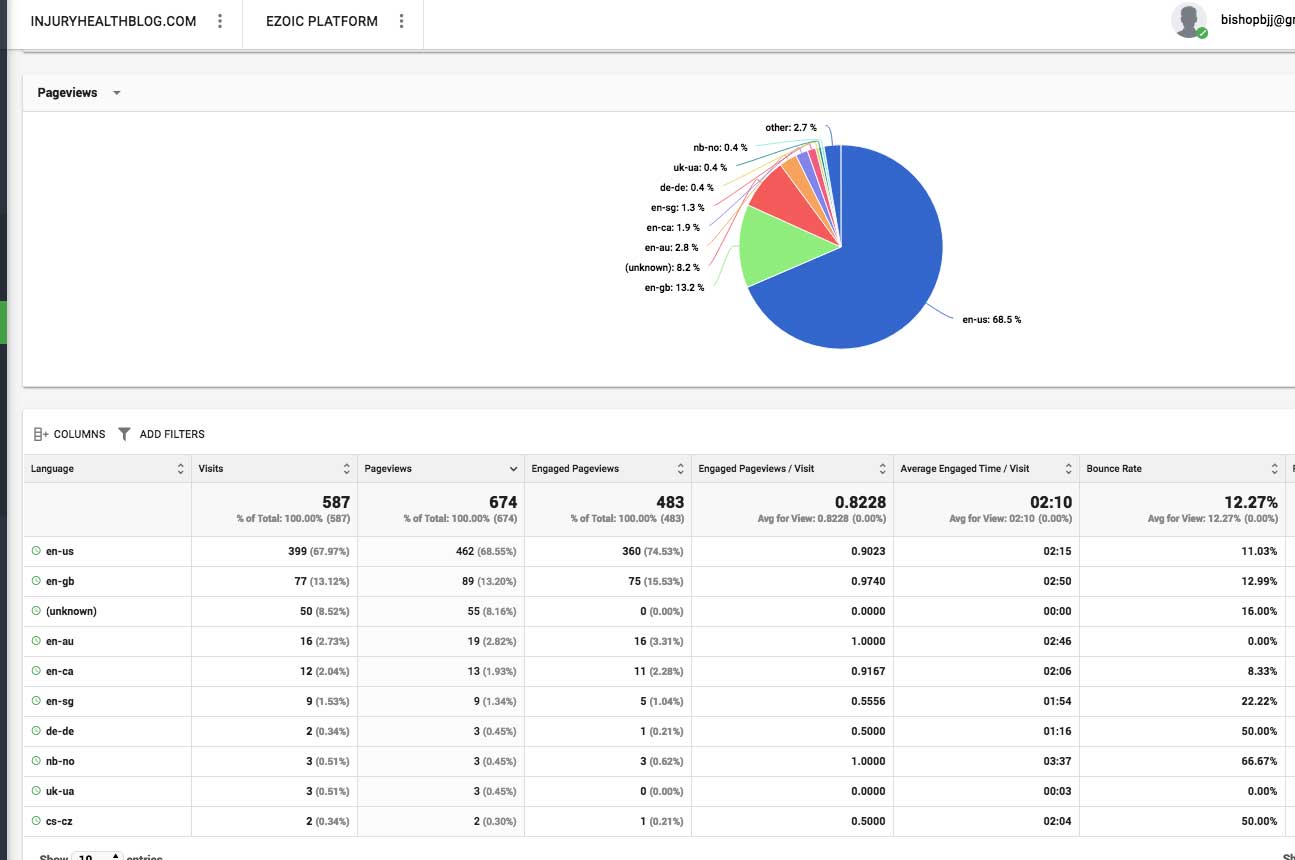9 Reader Engagement Ideas from Popular Websites
Below, you can watch Shelby and Tyler go through a few ideas. I’ve also summarized a nice list of reader engagement strategies in the text underneath.
Watch to learn more about The Financial Times’ tactics
What did The Financial Times do to engage readers?
The Financial Times, The Wall Street Journal, and The Telegraph all have experimented with different tactics to acquire, retain, and engage readers. One of the major difficulties these three large publishers all have in common is catching the attention of younger generations and encouraging them to engage with their content.
To combat this, The Financial Times began partnerships with multiple universities.
The publisher removed its paywall for students within the universities and now sends curated email newsletters relevant to the students’ majors.
Similarly, The Wall Street Journal offers different student deals all the time, such as a subscription for only $4.00 a month or $1.00 for 15 weeks. The Telegraph began reaching younger audiences on a popular social media platform used mostly by teens and young adults.
While most publishers don’t operate using subscriptions, we can still learn reader engagement and interaction tips from this approach.
IDEA: There may be organizations out there with large newsletters that lack for content. Try partnering with organizations that have newsletters to share weekly content from your site with their readers.
Below are some tactics used by publishers like The Financial Times, The Wall Street Journal, and The Telegraph for gaining loyal and interactive readers.
1) Logged-In Users or Free Subscriptions
Most publishers already use newsletters, or something similar, to develop a connection with their audience. But, what about free subscriptions? It’s a bit different.
Newsletters are a basic and effective way to continually touch base with your readers, and with lots of services like MailChimp available, it’s easy to create and automatically send newsletters to subscribers. Creating a way for readers to identify themselves makes them feel connected and allows you to see who your most loyal visitors are.
What you can do beyond sending a newsletter is to create “premium” content or access to your site by allowing users to create a profile on your site. This is the same as offering a free subscription.
While it may be more work to create additional content, this is a great way to use your best content to create a connection with your readers that you can leverage long-term.
ACTION: Test out the idea of creating “logged-in” users by creating some premium content (think graphs, infographics, podcasts, or video). Then, tack it on to an already engaging article and try to see who would be willing to create a website profile to view your premium content. If you use WordPress, there are a lot of plugins and free services that will allow you to use the core WordPress technology to create subscribed visitors/readers.
Logged-in users will allow you to better curate content for loyal readers and is a way to bring back consistent direct visitors (good for SEO) by using their e-mail to send them recent article or updates that may only be available to “subscribers”.
2) Use quizzes or surveys to create reader engagement in new content
If you’re a website that struggles with newsletters and free subscriptions, you can increase reader engagement by creating quizzes and surveys about your content and relevant news.
These quizzes not only ask your readers to interact with the content but it also curates data for future content as well.
If your readers see that the information from your quiz or survey aggregated in future articles, they will feel a sense of ownership. It’s also very likely it is content they will be interested in!
IDEA: Identify if your audience would be more interested in a survey or a quiz. Surveys can be done for free with Google Forms and embedded on your site. Quizzes are available through a multitude of services that offer free trials. Pick one and then see how readers respond when these are implemented in high traffic areas or on relevant articles.
Quizzes provide an easy and entertaining avenue for readers to connect with your website and content. Meanwhile, surveys allow them to voice their opinions. Both make content creation easier and help mobilize your existing audience for content they already find engaging.
3) Run contests or competitions
If you’re looking to get your readers more invested in your website, you can organize a contest or competition.
A contest provides you with a lot of new content — created by your readers — and allows you to decide what is published without directly turning anyone away. For example, Starbucks began a cup-decorating contest and received tens of thousands of submissions.
A recent study showed that the fastest-growing podcasts all have one thing in common — they pull listeners into the podcast with contents or competitions. One way is by having them call into their voicemail line to submit ideas or responses. Then, the podcast plays it over the air.
IDEA: Think about a content that would require your readers to submit something to you that you could review. Make it something enticing. Make it seem like they’d be recognized in a cool way if they submitted something good.
This is an old media technique used on radio talk shows and is still widely used by radio today. A contest is a content creator’s way of having listeners call in and helps readers feel like a participant rather than an observer.
4) Stop, collaborate, and listen
It’s becoming increasingly popular for websites to reach out to relevant organizations outside of the publishing sphere to collaborate.
Publishers offer to provide valuable, relevant content to the organization in exchange to be included in their newsletters or on their social media pages.
Some publishers have been successful in creating an entirely new, niche newsletter for a specific audience for the organization. From this partnership, you could redirect new readers to your site or encourage them to subscribe to your website’s newsletter. This sort of collaboration is a great way to expose your content to new groups and allows you to borrow an audience from someone that isn’t a direct competitor. In return, the organization receives free, quality content.
Additionally, you can also partner up with other publishers in a related genre (i.e. a fitness website and a healthy eating website). Through your partnership, you can share audiences and promote each other while expanding beyond your own website’s limitations.
5) A non-shady sweepstakes
Similar to contests, sweepstakes pull readers in and make them feel like a part of your content.
If you want to encourage greater reader loyalty, it is also important to study how you can own your audience. Sweepstakes may only work for certain publishers but can be a great way to develop loyalty from your readers.
You can get creative with giveaways or just reward people for subscribing to your newsletter or following you on social media. The prize doesn’t even have to be tangible —many readers would be perfectly satisfied with just recognition.
IDEA: Try working with a brand to offer a prize to visitors that subscribe to your newsletter. Don’t worry about the Pepsi’s of the world. Try hitting up an up-and-coming ecommerce business that advertises on social media. They may be the most willing to invest a small amount with you to try to grow their audience.
In many cases, brands or organizations would be happy to provide prizes in exchange for free promotion through your site, allowing you to form early brand relationships to nurture over time.
6) To create reader engagement… try engaging with readers
If you were to ask a social media guru how to grow your social media following, one of the action items they would stress is to respond to your audiences’ comments. While digital publishing and social media are not synonymous, this strategy carries over to the publishing world.
First, you should implement a comment section if you don’t already have one (despite the fact that they can be a pain to manage sometimes).
This allows readers to interact with your content directly and also generate conversation with other readers around your content. Once you’ve created a comments section, it is important to then go through the comments and respond, expand upon a topic, or clarify an answer. You can also use the comments section to study what is popular amongst your readers and then create new content or update old content to meet those needs.
7) Spinning popular content
You can easily intersect with your readers’ world by taking popular topics relevant to your niche and putting your spin on it.
The Wall Street Journal used this tactic when the ‘dress color debacle’ was popular. To make this relevant to their content, they wrote an article on the science behind why some people think the dress is gold and white while others think it is black and blue. They were able to take a popular, seemingly unimportant internet craze and participate with it in their own realm.
This strategy requires you to stay on top of the news and updates within the digital publishing sphere.
IDEA: See how your audience responds to this by following popular figures in your niche on Twitter. Latch on to something that is trending and post an article with your take. Then, tweet the article to all those in the space.
For this tactic to work, you also have to know when that window of popularity is over by studying the traffic data surrounding the subject. You want readers to see you as a relevant informational source, so it is vital to stay ahead of the curve and shut down a topic at the appropriate time.
8) Know your readers… but really…
Encourage reader interaction by considering who your readers are and producing content for those readers.
What country are they from? What native language do they speak?
What age group are they in?
You can study this by looking at your geo-location analytics by country percentage, which can easily be viewed in Google Analytics or for Ezoic users, Big Data Analytics.
Next, ask yourself how your website’s top five countries might view your content differently or how they have already reacted to your content. Recognize what you may need to change about your content, what new content you might create, or what you’ve already done really well.
It’s also important to think about what time you post new content, especially if the majority of your readers are in a different timezone. There are particular times of day your audience is more active and so it is in your best interest to post on social media during those times.
9) Never stop experimenting!
Lastly, don’t be afraid to step outside of your comfort zone and try something new. While you can study and prepare for negative outcomes, you don’t know what will work unless you put it into action.
For example, The Telegraph utilizes Snapchat as a way to connect with a younger audience and are the only premium news publication in the United Kingdom to do so.
They are now interacting with an audience that was not accessible to them through their traditional news outlets, and reach 3 million teenagers a month through Snapchat. The Telegraph is not concerned this younger crowd does not interact with their content through the newspaper or online, because though this audience may not subscribe to The Telegraph right now, they may in 10-15 years.
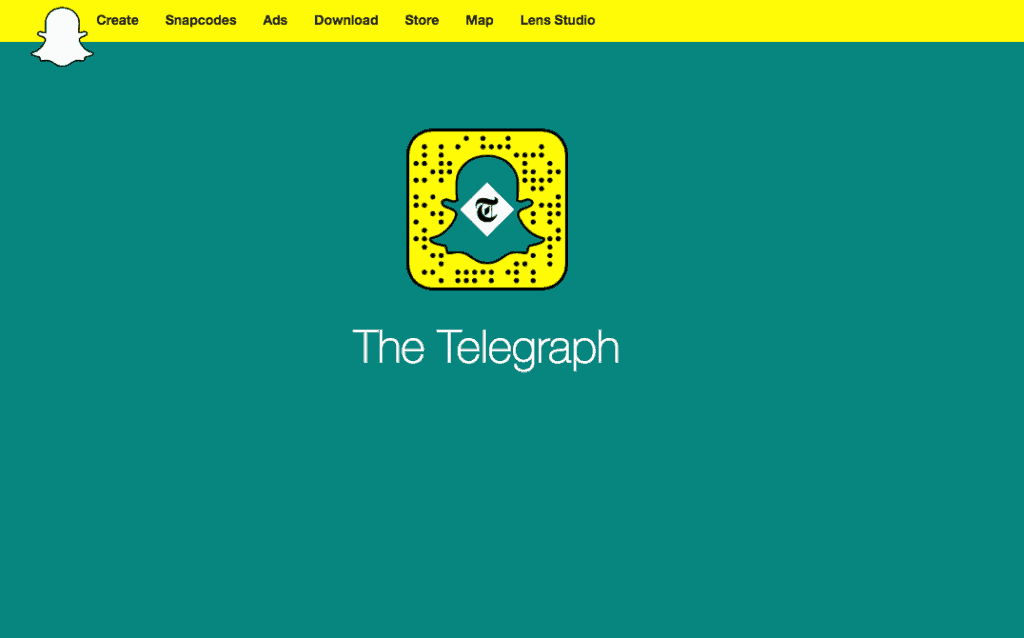
Of course, not every publisher has a decade or two to see if readers will subscribe to their newsletter or engage with their content, so there are a few other platforms and ideas to experiment with, such as podcasts, Snapchat, Instagram, voice transcription, and other emerging publishing trends.
Additionally, you could target a specific segment of your audience and try to generate content or a newsletter just for them.
All the ideas summarized in a list
To sum it all up, here are the nine ideas we covered to generate greater reader interaction and loyalty:
- Subscriptions
- Quizzes & Surveys
- Contests & Competition
- Collaboration
- Sweepstakes
- Comments Section Engagement
- Spinning Your Take On Popular Content
- Knowing Your Audience
- Experimentation
There are many routes to consider if you are trying to develop a loyal following and manufacture reader engagement, and not all of them are going to work for every publisher. If there is one thing I hope you gather from this post about experimenting with reader engagement, it is that you not be afraid to try and fail.
You won’t know what works until you try. Other ideas? Leave them in the comments below.


